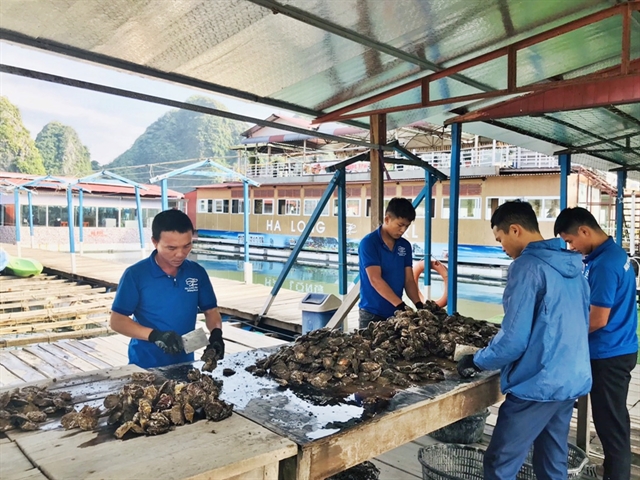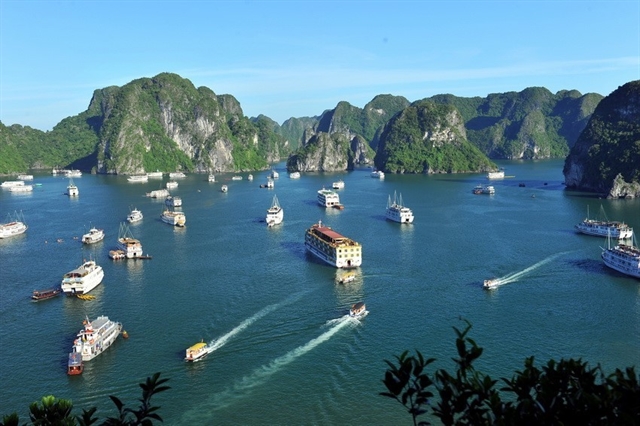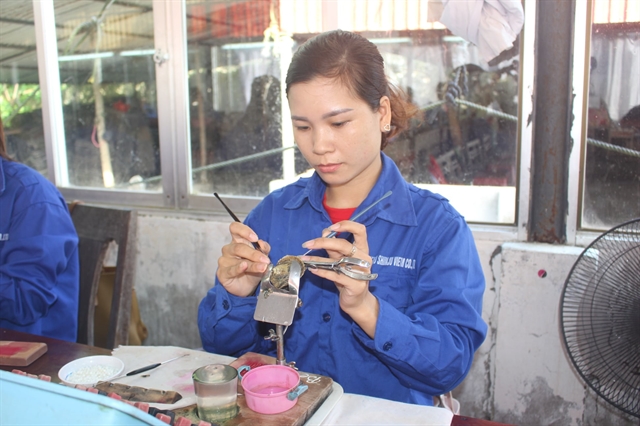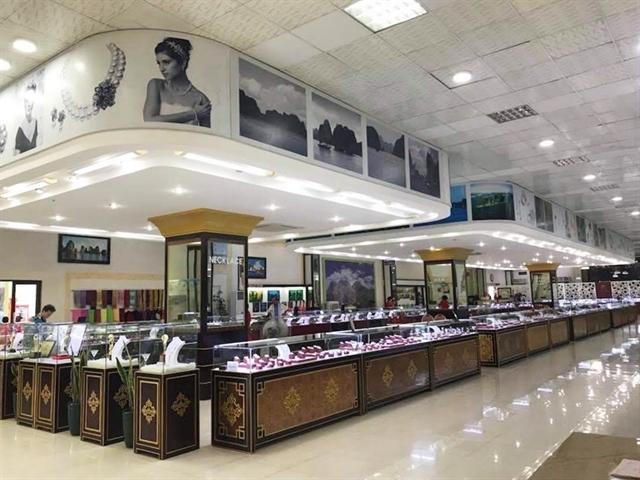 Society
Society


|
| Staff at HaLong Pearl Joint Stock Company open pearl-bearing oysters at their pearl farm in Hạ Long Bay, Quảng Ninh Province. Photo by Nguyễn Thùy Hương |
Bảo Hoa
QUẢNG NINH — Hạ Long Bay may be the most popular tourist destination in Quảng Ninh, but the coastal province's local pearl farms are also worth a visit.
Blessed with clear waters and plenty of plankton, Hạ Long and Bái Tử Long bays have the ideal environment, temperature and salinity for pearl farming. High-quality cultured pearls produced here have been exported to Japan, South Korea, China and a number of European countries.
Pearl farming started in Quảng Ninh about 40 years ago. But it was not until the early 1990s – when a number of pearl production companies from Japan invested in the business – that it became a noticeable trade.
The pearl farming process is long and consists of several stages, from choosing the right oysters, transplanting pearl nuclei, to keeping the oysters healthy while they bear pearls, and manufacturing pearl jewellery. Each stage requires patience, hard work and craftsmanship, which makes the high value of the pearls.

|
| The waters of Hạ Long Bay have the ideal temperature and salinity for pearl farming. VNA/VNS Photo Đinh Thị Ngọc Liên |
The oysters are raised in 18 months, then the strongest, most finely shaped ones are chosen to enter a process called “suppressive farming” when they are put into a black box, which will be kept from three to four metres below the water surface, and fed very little. The purpose is to weaken the oysters so pearl technicians can open their shells easily for nucleus transplant.
The transplants take place on land. A pearl nucleus will be put into the oyster’s ovary, and depending on the size of their ovary, each oyster can bear from one to four nuclei. The nucleus is a fragment of the oyster’s mantle, which, 15-20 days after it has been put into the oyster, will form a pearl sac to begin pearl formation.

|
| A staff member at Taiheiyo Shinju Việt Nam Ltd. Co put pearl nuclei into an oyster at the company's pearl farm in Bái Tử Long Bay. Photo by Ngô Thị Vui |
After receiving the nuclei, the oysters will be put in cages and back into the ocean. The cages are placed at 2.5 metres below the water surface, a moderate depth to prevent them from touching the seabed and mud from entering the oysters.
Since it takes at least six months for a pearl to form, the entire pearl farming process takes at least two years, even more for the pearls to reach a certain size and shape. Half of the oysters may die during this process, and some will expel the pearls. Only a small number will reach the final stage and produce quality pearls.
After harvesting, the pearls will be classified based on their size, shape, colour, and the gloss and smoothness of their surface. Normally, the highest quality, most expensive, pearls account for only 10 per cent of the total.

|
| Pearls are classified based on different factors such as their size, shape, colour, and the gloss and smoothness of their surface. Photo by Nguyễn Thùy Hương |
Popular pearl providers in Quảng Ninh are the HaLong Pearl Joint Stock Company and Taiheiyo Shinju Việt Nam Ltd., both joint ventures between Việt Nam and Japan.
The former is the first company in Việt Nam that can perform a full pearl farming process, from raising and breeding pearl-bearing oysters to creating products from pearls, and offering visits to their farms for tourists. The latter was able to create a new type of pearl called Spica – a hybrid between Vietnamese and Japanese oysters – which won the Vietnam Gold Star Award in 2006 and has been exported to the US, Japan and Europe.
The effort put into bringing made-in-Việt Nam pearls to the world is undeniable, but pearl farming is nonetheless a craft that depends largely on nature. Changes in weather, water quality, and the oysters’ health can affect the quality of the pearls.
Since the COVID-19 pandemic started, the companies have seen a drop in production and sales.

|
| Jewellery made from Quảng Ninh's pearls are displayed at a trade centre in the province. Photo by Nguyễn Thùy Hương |
HaLong Pearl JSC director Nguyễn Thùy Hương told Việt Nam News: “We were able to maintain business as usual for a year, but gave in eventually. In the middle of this year, the majority of our production was halted.”
“Part of the work is still maintained to ensure we meet the production plans,” she added. “From now until Tết holiday we will have a pearl harvest. But I don’t dare let all of my staff come into work.”
Taiheiyo Shinju Việt Nam had similar experiences, according to its representative Ngô Thị Vui. But the company is still hopeful it can revive and expand in the future.
“Local authorities do support us, and we also strictly comply with COVID-19 prevention regulations,” she told Việt Nam News. “It’s in our best interest to expand our pearl farms.” VNS




